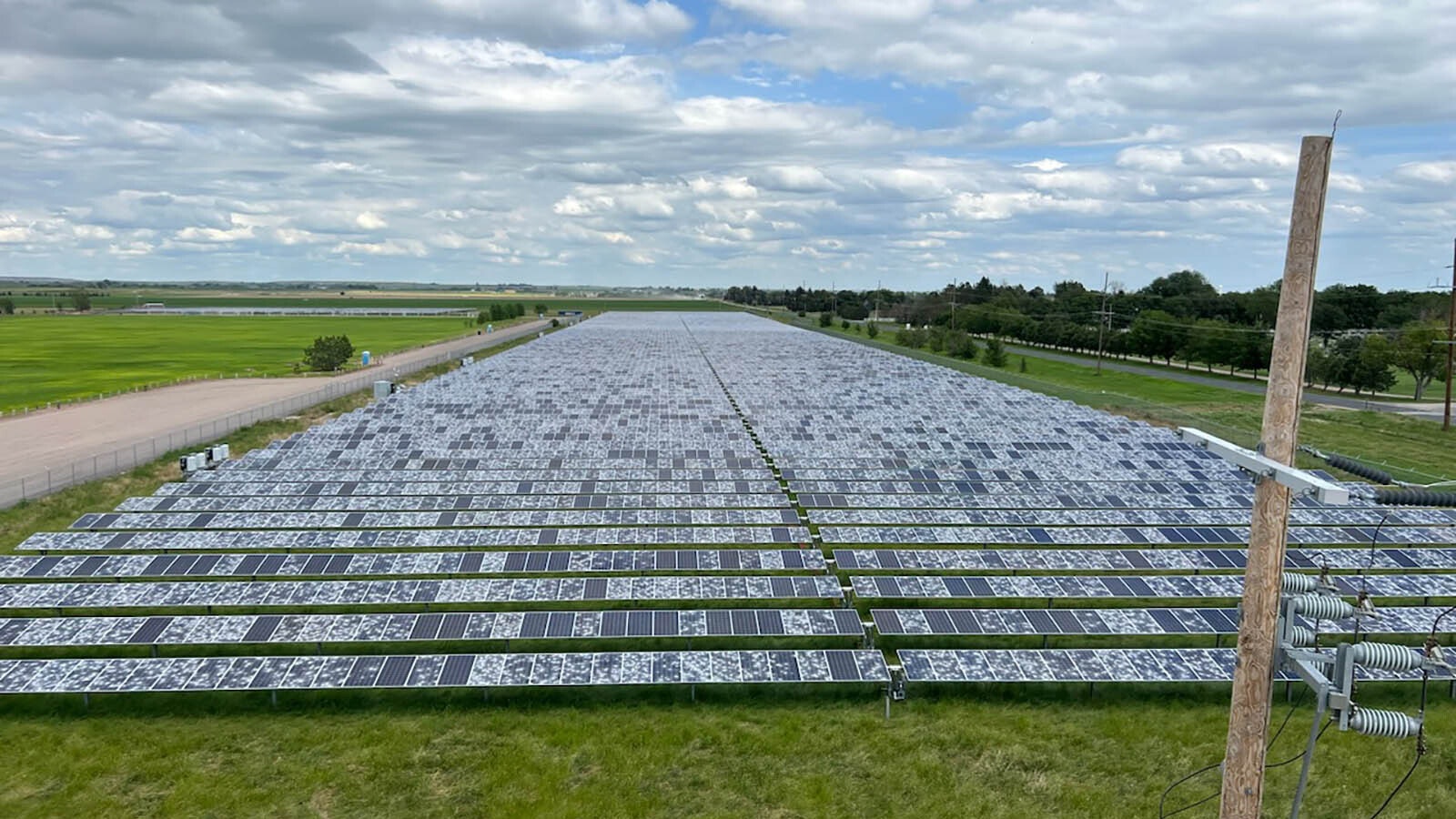The extent of the damage at a Scottsbluff solar farm that was heavily damaged in a hailstorm last week remains unknown.
“They’re still working through that process,” Grant Otten, spokesperson for the Nebraska Public Power District, which buys electricity from the solar farm, told Cowboy State Daily.
Cowboy State Daily reached out to Sol Systems, which financed and developed the project, but didn’t receive a response.
While some of the solar panels at the farm may be salvageable, as well as other equipment, it’s likely many of the panels will need to be discarded.
Even if solar panels aren’t destroyed by weather events, they gradually stop producing much electricity and reach the end of their lives in 20 to 30 years.
By 2050, the International Renewable Energy Agency estimates that 78 million tons of solar panels will come to that point.
Recycling
While renewable energy proponents are pinning their hopes on recycling to deal with this coming deluge of e-waste from dead solar panels, only about 10% of them are recycled, and only a small portion of any single panel provides recoverable minerals.
B.F. Randall, who has a background in project development and finance, told Cowboy State Daily that a lot of people are under the impression that recycling a solar panel means you make a new solar panel.
“A solar panel has very little mineral content relative to the volume of the panel,” Randall said. “So, it's just not something that can be recycled in that sense.”
Polysilicon
The polysilicon in solar panels cannot be recycled at all, he said.
It takes 3 to 5 tons of polysilicon to produce 1 megawatt worth of solar panels. To make it, they take silicon dioxide and mix it with carbon, which is most often derived from coal. However, it’s possible to use wood or graphite.
The mixture is dropped in a furnace at about 3,600 degrees Fahrenheit, which means it takes large amounts of constant energy to produce the heat needed for the process.
For every ton of polysilicon produced, 3-4 tons of silicon tetrachloride, a highly toxic compound, also are produced.
As solar panels reach the end of their useful lives, most of that polysilicon will need to be disposed of in landfills.
“Polysilicon … can’t ever be recycled back into polysilicon. If it’s fake cycled into sand it would be absolutely toxic,” Randall said.
Other minerals
It is possible to recover aluminum and copper from a panel's frame and junction box.
The Grist, a publication of a pro-renewable nonprofit, reported that a recycled panel will produce about $3 in recovered aluminum, copper and glass, which after transportation costs will cost between $12 and $25 to get.
The same panel tossed into a landfill will cost less than a buck.
There is also a small amount of silver to recover from the panel that’s worth less than the cost to recover it.
As Randall explains in a Substack article, solar panels contain about 60 grams of silver paste. Each panel only has a tiny amount, but the industry altogether consumes 9% of all silver produced in the world.
If that solar paste were refined silver, it would be worth $6 — but it’s not refined.
Randall said in an interview that the paste contains contaminants that have diluted that refined silver.
“You can’t recover the silver. It doesn’t work that way,” he said.
Regulations
So long as the cost to recover minerals from the solar panels exceeds the value produced, the best way to deal with destroyed or exhausted solar panels is to throw them away, like is done with most wind turbine blades.
Some nonprofits are shipping dead panels to developing countries where the weak amount of electricity they produce still has some benefit to people who have no access to other sources of power.
The European Union is trying to address the problem by requiring manufacturers to finance end-of-life collection and recycling, which will increase the cost of the panels.
So far, only Washington state has passed similar legislation, which will go into effect in 2025.





